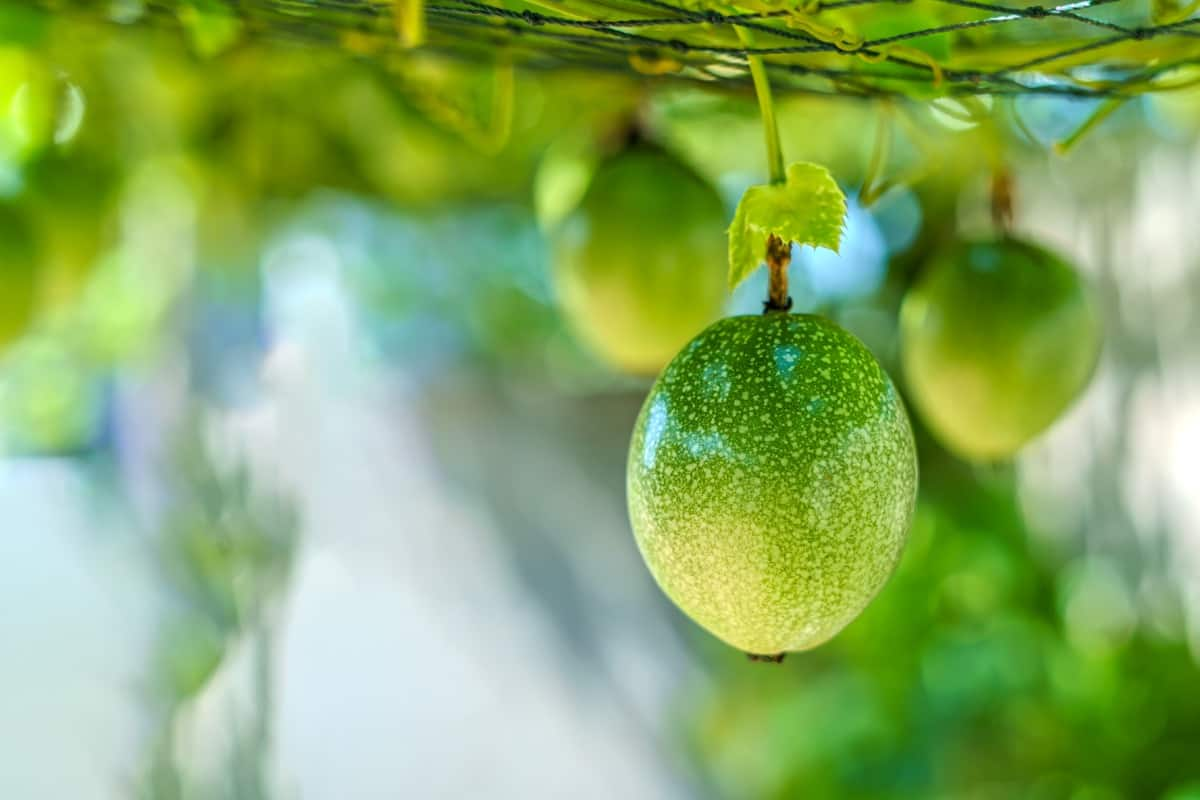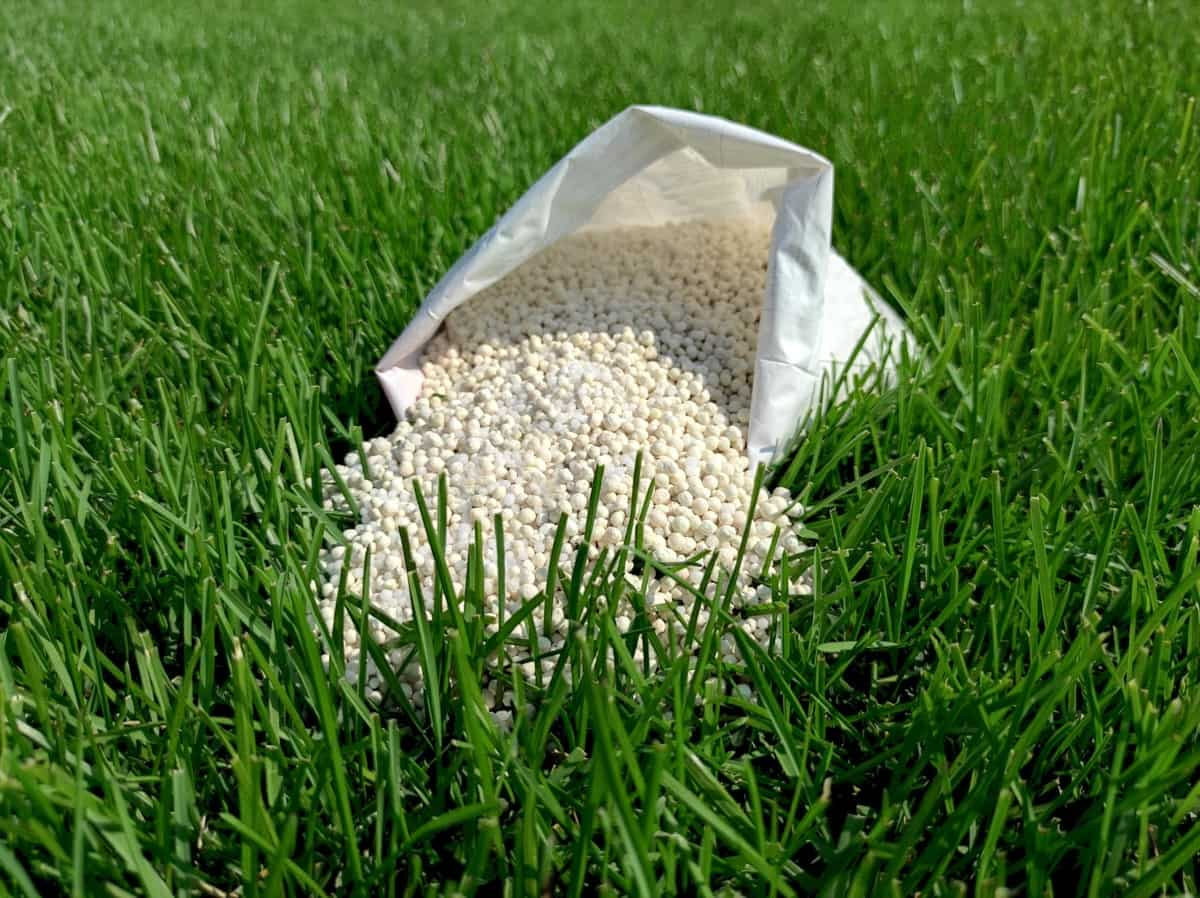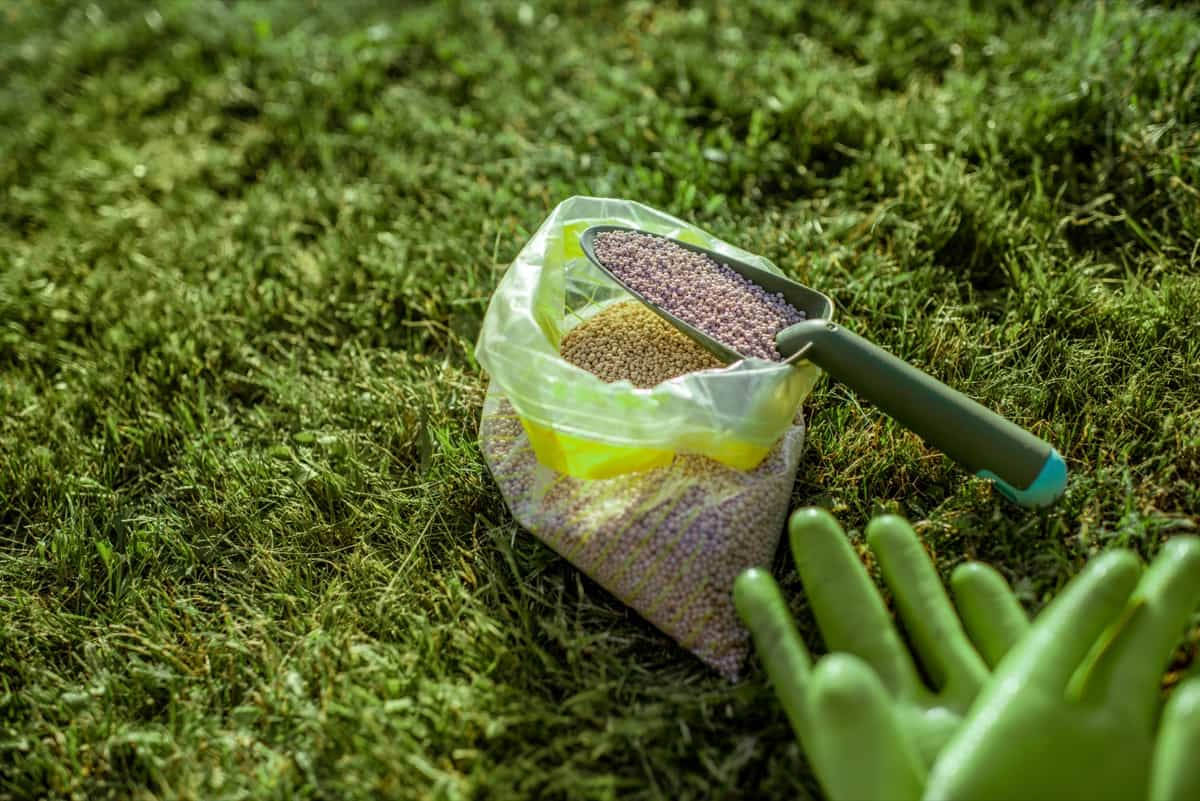New strategies to save the world's most essential grain
Rice experiments conducted in a field. Photo by Julia Bailey-Serres/UC Riverside
Genetic knowledge helps rice survive drought and floodsPlants: They're just like us, with unique techniques for dealing with stress. To save one of the most important crops on the planet from extreme climatic fluctuations, scientists are developing the plants' own anti-stress strategies.
A team led by UC Riverside learned what happens to the roots of rice plants when faced with two types of stressful scenarios: too much water or too little. These observations form the basis for new protection strategies.
"This single crop is the main source of calories for more than 45% of humanity, but its crops are in danger," said Julia Bailey-Serres, UCR geneticist and lead on the study. "In the United States, floods rival droughts in damage to farmers' crops each year."
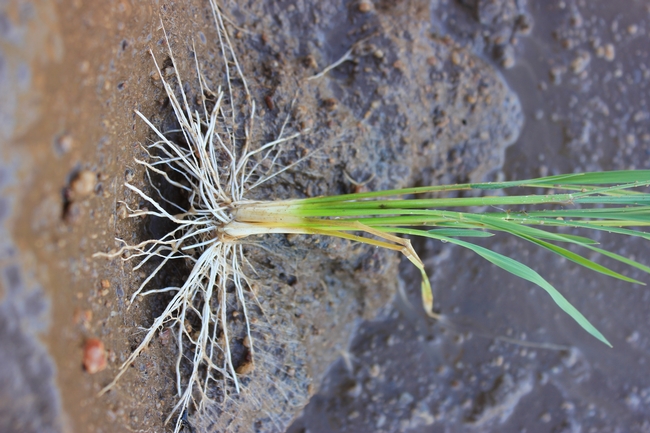
Rice plant with visible roots. Photo by Julia Bailey-Serres/UC Riverside
Although it is possible for rice to thrive in flooded soils, the plants produce less food or even die if the water is too deep for too long. This work simulated prolonged flooding of five days or more, in which the plants were completely submerged. It also simulated drought conditions.In particular, the researchers looked at the root response to both types of conditions, as roots are the invisible first responders to flood and drought stress.
Their work is described in a new article published in the journal Developmental Cell.
A key discovery concerns a cork-like substance, suberin, which is produced by the roots of rice in response to stress. It helps protect against flooding as well as drought.
"Suberin is a lipid molecule that helps water taken up by the roots reach the shoots and helps oxygen from the shoots reach the roots," Bailey-Serres said. "If we enhance the plant's ability to create suberin, rice has a better chance of surviving in all weathers."
Researchers have been able to identify a network of genes that control suberin production and can use this information for gene editing or selective breeding.
"Understanding suberin is particularly exciting because it is not susceptible to degradation by soil microbes, so the carbon the plant puts into suberin molecules in the roots is trapped in the soil" , said Alex Borowsky, UCR computational biologist and co-author of the study. author.
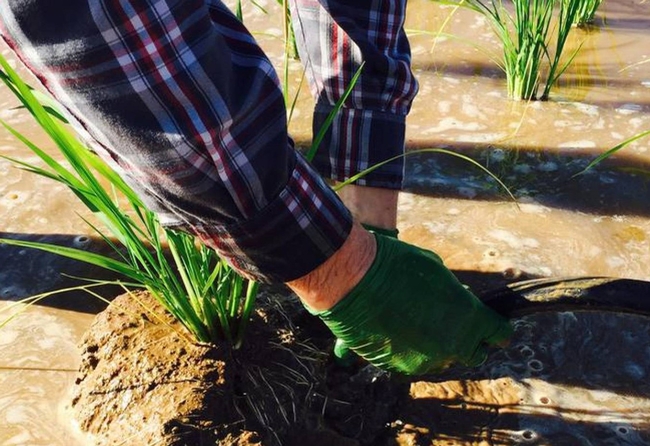
Researchers simulated both prolonged flooding and drought conditions and observed how the roots reacted. Photo by Julia Bailey-Serres/UC Riverside
"This means that increasing suberin could help fight climate change by removing and storing carbon from the atmosphere."Researchers have also identified genes controlling some of rice's other stress behaviors.
"One of our interesting findings is that when rice plants are submerged in water, the root cell growth cycle is interrupted, then restarted shortly after the shoots gain access to water. 'air," Bailey-Serres said.
In the future, the research team plans to test how altering these stress responses can make the plant more resilient to both wet and dry conditions.
"Now that we understand these responses, we have a roadmap for making targeted changes to the rice genome that will result in a more stress-tolerant plant," Bailey-Serres said.
Although heavy rains and droughts are increasingly threatening, Bailey-Serres hopes the new genetic technology can increase her resilience before it's too late.
“With genome editing, the fact that we can make a tiny but targeted change and protect a plant against disease is amazing. Although our crops are under threat, new technologies give us reason to hope” , said Bailey-Serres.
/h3>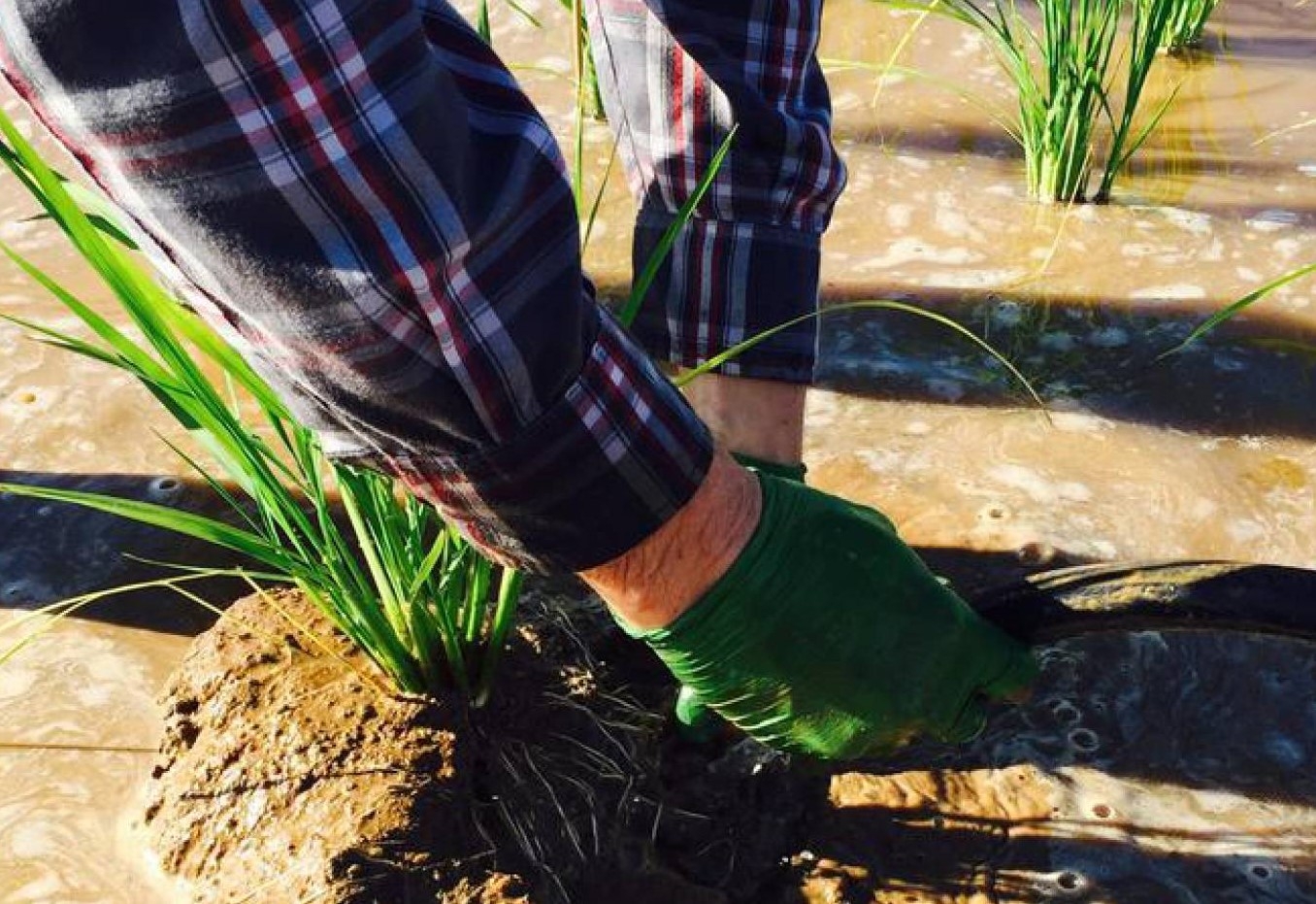
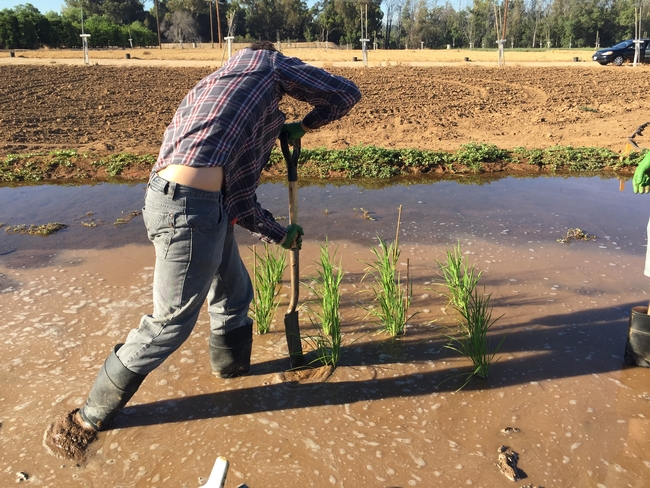
Rice experiments conducted in a field. Photo by Julia Bailey-Serres/UC Riverside
Genetic knowledge helps rice survive drought and floodsPlants: They're just like us, with unique techniques for dealing with stress. To save one of the most important crops on the planet from extreme climatic fluctuations, scientists are developing the plants' own anti-stress strategies.
A team led by UC Riverside learned what happens to the roots of rice plants when faced with two types of stressful scenarios: too much water or too little. These observations form the basis for new protection strategies.
"This single crop is the main source of calories for more than 45% of humanity, but its crops are in danger," said Julia Bailey-Serres, UCR geneticist and lead on the study. "In the United States, floods rival droughts in damage to farmers' crops each year."

Rice plant with visible roots. Photo by Julia Bailey-Serres/UC Riverside
Although it is possible for rice to thrive in flooded soils, the plants produce less food or even die if the water is too deep for too long. This work simulated prolonged flooding of five days or more, in which the plants were completely submerged. It also simulated drought conditions.In particular, the researchers looked at the root response to both types of conditions, as roots are the invisible first responders to flood and drought stress.
Their work is described in a new article published in the journal Developmental Cell.
A key discovery concerns a cork-like substance, suberin, which is produced by the roots of rice in response to stress. It helps protect against flooding as well as drought.
"Suberin is a lipid molecule that helps water taken up by the roots reach the shoots and helps oxygen from the shoots reach the roots," Bailey-Serres said. "If we enhance the plant's ability to create suberin, rice has a better chance of surviving in all weathers."
Researchers have been able to identify a network of genes that control suberin production and can use this information for gene editing or selective breeding.
"Understanding suberin is particularly exciting because it is not susceptible to degradation by soil microbes, so the carbon the plant puts into suberin molecules in the roots is trapped in the soil" , said Alex Borowsky, UCR computational biologist and co-author of the study. author.

Researchers simulated both prolonged flooding and drought conditions and observed how the roots reacted. Photo by Julia Bailey-Serres/UC Riverside
"This means that increasing suberin could help fight climate change by removing and storing carbon from the atmosphere."Researchers have also identified genes controlling some of rice's other stress behaviors.
"One of our interesting findings is that when rice plants are submerged in water, the root cell growth cycle is interrupted, then restarted shortly after the shoots gain access to water. 'air," Bailey-Serres said.
In the future, the research team plans to test how altering these stress responses can make the plant more resilient to both wet and dry conditions.
"Now that we understand these responses, we have a roadmap for making targeted changes to the rice genome that will result in a more stress-tolerant plant," Bailey-Serres said.
Although heavy rains and droughts are increasingly threatening, Bailey-Serres hopes the new genetic technology can increase her resilience before it's too late.
“With genome editing, the fact that we can make a tiny but targeted change and protect a plant against disease is amazing. Although our crops are under threat, new technologies give us reason to hope” , said Bailey-Serres.
/h3>What's Your Reaction?









